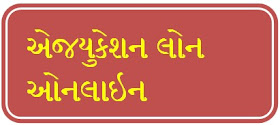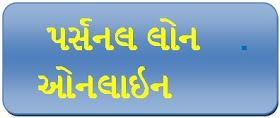
Home loan and car loan will be expensive. Know how much the interest rate of rbi has increased.
1.55 lakh rupees more will have to be paid on a loan of 30 lakh rupees for 20 years RBI increased interest rates by 0.35 percents
Worried about rising inflation, the Reserve Bank of India i.e. RBI has increased the repo rate by 0.35% due to which the repo rate has increased from 5.90% to 6.25% which means everything from home loans to auto and personal loans will become more expensive and you will have to pay more emi
The meeting of the Monetary Policy Committee was going on from December 5 to take a decision on the interest rate, rbi Governor Shashikant Das made an announcement regarding the interest rate in a press conference. Earlier in the meeting held in September, the interest rate was increased from 5.40% to 5.90%
How much of a difference would a 0.35 percent increase in the line make?
Suppose a person named Rohit takes a loan of 30 lakhs at a fixed rate of 7.55% for 20 years and his EMI is ₹24,260. In 20 years he has to pay an interest of 28 lakhs 22,3004 rupees at this rate. After Rohit took a loan, rbi increased the rate by 0.35 percent, and for this reason, the bank increased the interest rate by 0.35 percent. Now, when a friend of Rohit approaches the same bank for a loan, the bank tells him the interest rate is 7.90 percent instead of 7.55 percent. Rohit’s friend also takes a loan of Rs 30 lakh for 20 years but his EMI becomes 24,907 i.e. 647 more than Rohit’s EMI due to which Rohit’s friend has to pay a total of Rs 59 lakh 77,634 in 20 years which is ₹ 1,55,330 more than Rohit’s.
ગેરેન્ટી વિના મેળવો 10 લાખ રૂપિયા સુધીની લોન, આ સરકારી બેંકે શરૂ કરી પીએમ વિદ્યાલક્ષ્મી યોજના
Important Link
કાર લોન EMI કેલ્ક્યુલેટર માટે અહીં ક્લિક કરો
પર્સનલ લોન EMI કેલ્ક્યુલેટર માટે અહીં ક્લિક કરો
હોમ લોન EMI કેલ્ક્યુલેટર માટે અહીં ક્લિક કરો
Will EMI increase on existing loans also?
There are two types of loan interest rates, fixed and floater. In fixed, your loan interest rate remains the same from beginning to end. Changes in the repo rate do not affect it. At the same time, in floater, the repo change affects your loan interest rate. If you have taken a loan, your income will also increass
અહીંથી ડાઉનલોડ કરો ફાઇનાન્સ કેલ્ક્યુલટર
RBI also held an additional meeting
In recent days ie in November RBI increased monetary policy meeting in fact for 9 months the inflation rate remained outside the rbi’s range of 2% to 6% due to which the rbi had to hand over to the concerned government the reasons and measures taken.
The RBI meeting was chaired by Governor Shashikant Das and MPC members Dr Michael Dev Vrat Patra Dr Rajeev Ranjan Dr Shashank Bhide Dr Ashima Goyal and Prof Jayant R Verma were present
Why does RBI increase or decrease repo rate?
RBI has a powerful tool to fight inflation in the form of reporate. When inflation is too high, RBI tries to reduce the flow of money into the economy by increasing the repo rate. It will make loans more expensive, thereby reducing the flow of money in the economy. If money flow is less then demand will decrease and inflation will decrease
Similarly, when the economy goes through a bad phase, there is a need to increase the flow of money for recovery, in such a situation, the RBI reduces the repo rate, due to which the loans from the RBI become cheaper for the banks and the customers also get the loans at the authority rate when during the Corona period. When the economic activity came to a standstill, the demand decreased. In such a situation, the RBI reduced the interest rates to infuse money into the economy.
હોમ લોન રિપોર્ટ
What happens when the reverse ratio increases or decreases
Reverse repo rate is the rate at which rbr pays interest to banks to hold money When RBI has to drain liquidity from the market it increases the repo rate Banks benefit by getting interest from RBI for their holdings RBI increases repo rate during high inflation in the economy This reduces the funds available to banks to lend to customers





